Open Day at Laak Boorndap Test Garden with designers Susie Quinton and Jac Semmler.
Cultivating 'Heaven's Beauty' in the heart of Melbourne.
Last weekend, I attended the first Open Day at the Test Garden for Laak Boorndap, an 18,000-square-metre urban garden designed for the Melbourne Arts Precinct Transformation project. Here, I share my observations and pull together the many notes I took during a discussion about the project by two wonderful humans involved in the design - Susie Quinton from Hassel, an international design studio and Jac Semmler, a plant practioner from Super Bloom.
If you find yourself in Melbourne CBD, make sure you add the Test Garden to your must-see list. Photos don’t do it justice, and it is a full sensory experience. I was hit by the smell of sweet perfumes long before I even saw a plant!
Enjoy my observations from my morning with the designers.
Before we get started …
If you’re new here or have been following for a while, welcome! Hello, I’m Cass, an ex-midwife and nurse, mother and enthusiastic everyday gardener from Victoria, Australia. Gardening means something different to everyone, so here I share my gardening stories about the plants and people connected to it.
If you want to get my free Substack in your email inbox, make sure you subscribe!
"Oh my goodness, I just saw my first blue-banded bee here!" someone exclaims behind me as I stand holding my coffee, taking in my first sights of the Test Garden for Laak Boorndap.
I smile quietly to myself and turn to see who has spoken. She tells her partner and young daughter that someone spotted the first blue-banded bee at the project this morning, but this is her first sighting.
I understand her joy completely. These little fuzzy, iridescent creatures visit the salvias outside my front door every day, and yet, every time I see one, my heart still leaps with delight.
Some may say, "It's just a bee."
But it's a sign of something bigger.
What I don't know at the time is that this lovely person sharing her excitement is one of the designers of the very garden we are admiring: Susie Quinton, a Principal Landscape Architect & Practice Leader at Hassell, an international design studio.
At the first open day for the Test Garden, Susie sits down with fellow project partner Jac Semmler from Super Bloom to discuss the project's journey, from concept to vision for completion. With tears in her eyes, Susie shares that one of her personal KPIs (her measure of success) is seeing blue-banded bees finding food in this space. And today, it happens.
The Test Garden, situated on top of a car park behind the National Gallery of Victoria at Federation Square, is exactly what it sounds like. A slice of something much bigger. Sixty times bigger, in fact.
That 'something bigger' is an 18,000-square-metre urban garden, part of the Melbourne Arts Precinct Transformation Project. Work began in 2019, with testing planned over the next two to three years and the final garden set to be completed by 2029.
If you know Melbourne, then you'll know the Arts Centre spire. The future garden will sit at the heart of this space, connecting Hamer Hall to the National Gallery of Victoria.
You can actually see the future site from the Test Garden. Looking over at the spire while standing in the test garden jogs my memory of days studying ballet and dance at The Australian Ballet School and the Victorian College of the Arts. As a student dancing on the stages beneath the spire, I dreamed of a career telling stories through movement. I spent years running across the Kavanagh Street Bridge to the Arts Centre, dashing across the grassy park between Hamer Hall and the Arts Centre to catch the train home via Flinders Street. Imagining this space as a garden one day, filled with colour and movement, fills me with joy. I picture artists from all fields spending their lunch breaks here, fully immersed, refilling their creative cups.
Susie shares the vision of Laak Boorndap: a garden where the arts, performance and people come together. A living, breathing performance of its own, ever-changing with the seasons and drawing people in time and time again. This will be an immersive space designed to bring plants to the people and encourage adventure and experience. A garden for all ages, rich with intergenerational joy.
I can't help but marvel at this. How many gardens do we visit, mentally ticking them off as 'seen', knowing we likely won't return? But this? This is a place that will call people back. A space that rewards curiosity with something new each time.
Testing, learning and growing
Testing and prototyping are crucial steps in a project of this scale. The team is not just planting, they're experimenting.
"We want to get this right," Susie says.
The Test Garden is also a site of rigorous observation: plant resilience, groups that grow well together, flowering sequences, pollinator activity and water requirements. Researchers from Melbourne University's Burnley campus have partnered with Hassell to run plant trials over four to five months. The plants grow in a specially developed substrate called Burnley Roof Mix, which is used across all test sites to maintain consistency.
Even the bed construction is a study in innovation. It sits on a platform with limited slab capacity, using 150mm–180mm of substrate, drainage cells for water retention, and a filtration bed for runoff collection. Watering methods are also being tested. The team made a conscious decision to use spray irrigation over drip lines due to the planting complexity. Two irrigation zones are being trialled, with a transitional area between them to compare effectiveness.
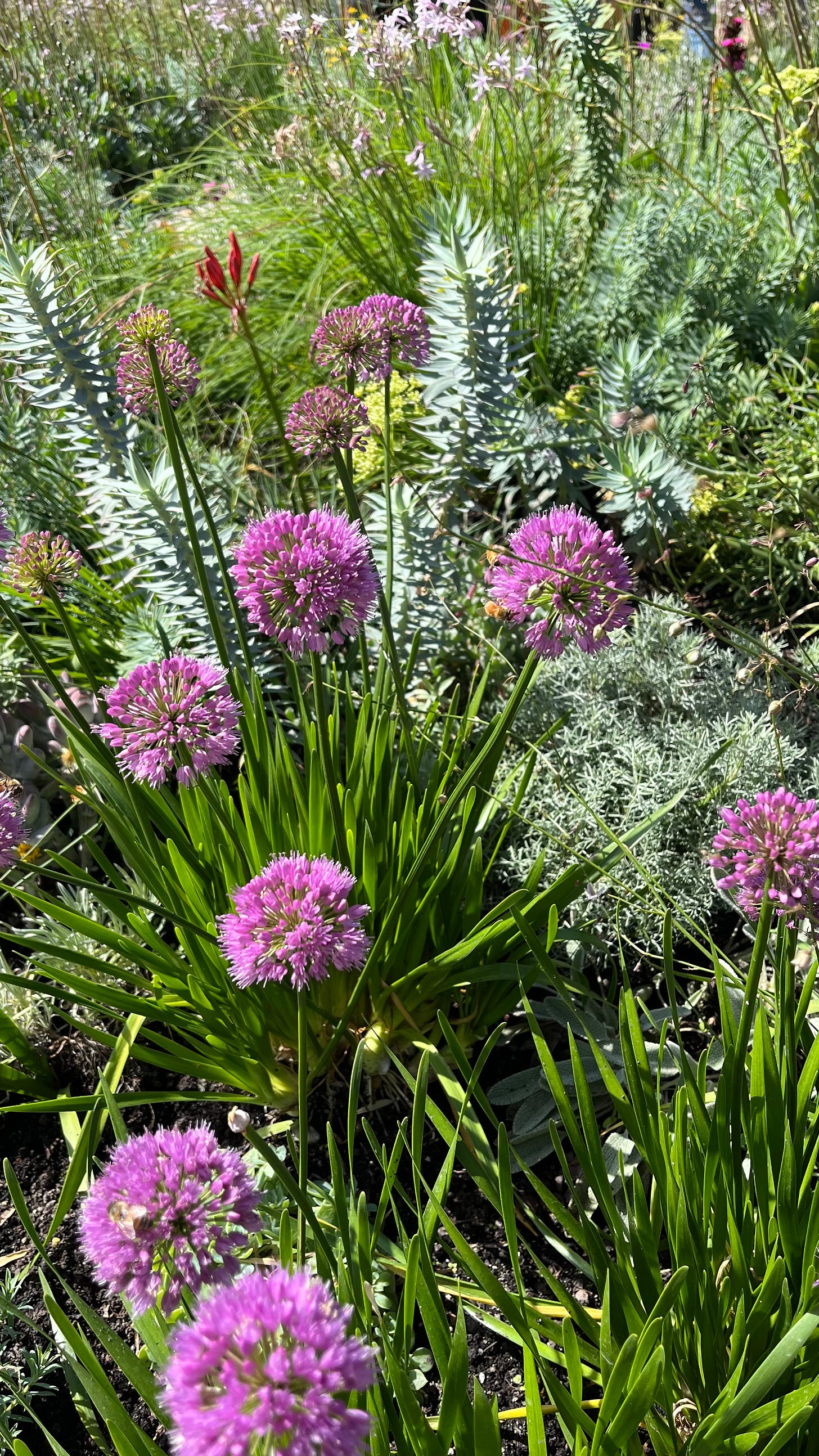
Susie shares that, ultimately, it's all about identifying which plants are 'studs' and which are 'duds.' If a plant struggles, they swap it for a similar species, evolving the garden in real time. There's something deeply reassuring about this approach, acknowledging that not everything will thrive but being ready to adapt rather than force.
And this knowledge won't stay within the project team. Findings from the Test Garden will be shared publicly, influencing everything from public space design to home gardens. The team hopes this research will spark greater biodiversity in urban and suburban landscapes, especially in our evolving dry summer climate.
A different kind of public garden
Jac Semmler from Super Bloom describes the style of planting at Laak Boorndap as 'naturalistic.' Naturalistic planting is a way of designing gardens to look and feel like natural landscapes. It focuses on using plants that grow well together and need little care, creating spaces that are both beautiful and good for the environment.
Traditional public gardens often follow a European heritage style, with peak flowering seasons followed by periods of dormancy. While beautiful, these gardens offer little in the way of year-round sustenance for pollinators and a lot of maintenance.
What's different about Laak Boorndap is that it aims to flower continuously, all year round. Imagine that! Stepping into a garden that's always in bloom, no matter when you visit.
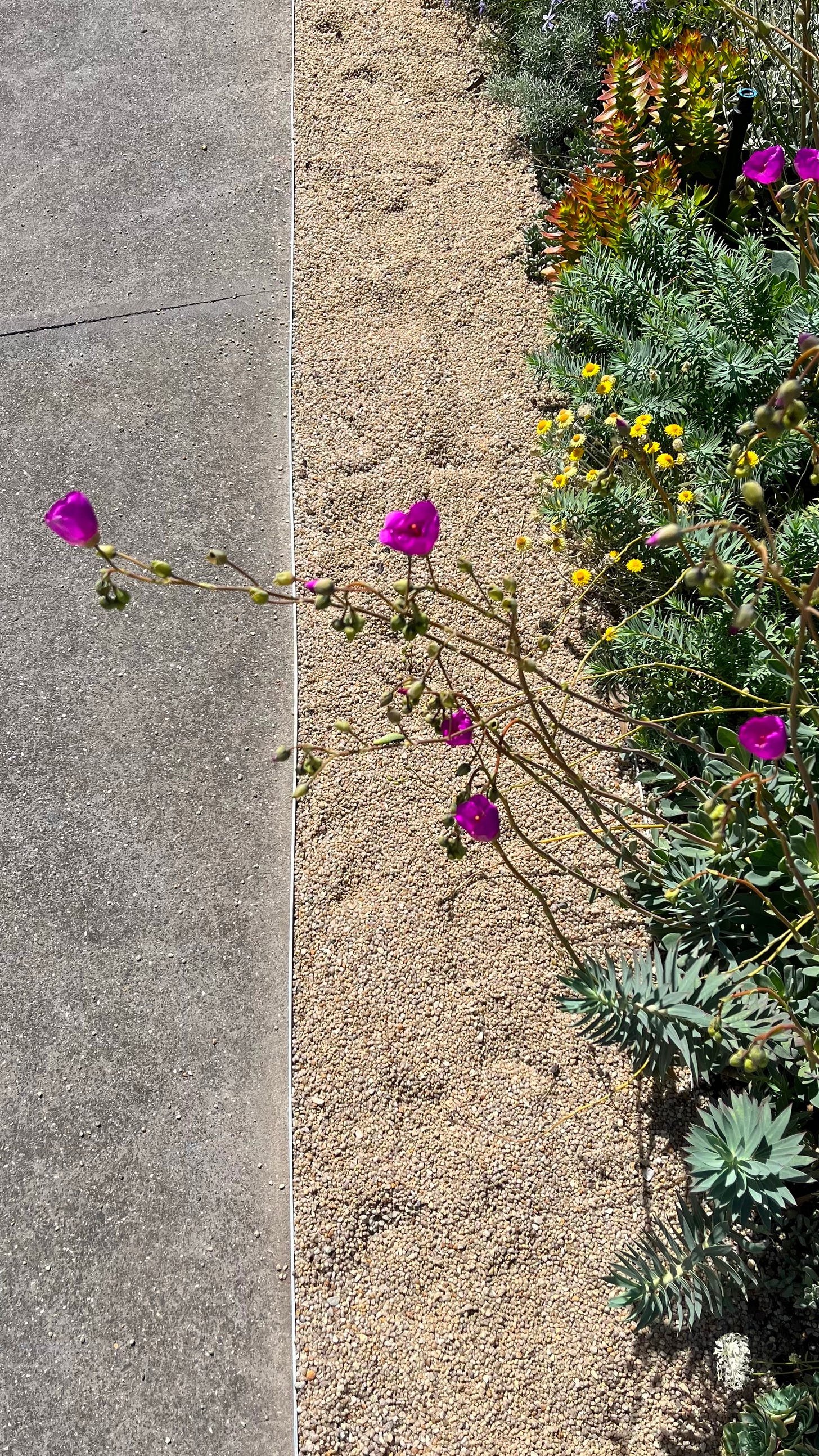
And this floriferous continuity isn't just designed for human enjoyment. Many insect species are migratory, relying on food sources across different seasons. The garden is designed with successional flowering in mind, ensuring an ongoing food supply for our tiny-but-mighty invertebrates.
Connection to country
While the focus is on Australian plants in the design, particularly threatened Victorian species, the design is not exclusively native or indigenous. The design team consulted with First Nations Elders, incorporating their plant knowledge and cultural insights into both hardscape and planting designs.
One of these Elders, Aunty Gail, named the project 'Laak Boorndap', which means 'Heaven's Beauty.' Her vision is that anyone from any country can visit this garden and find something familiar from their homeland, creating a deep and personal connection to the space. This idea resonates with me deeply: how gardens can be both unique in their place and universally welcoming at the same time.
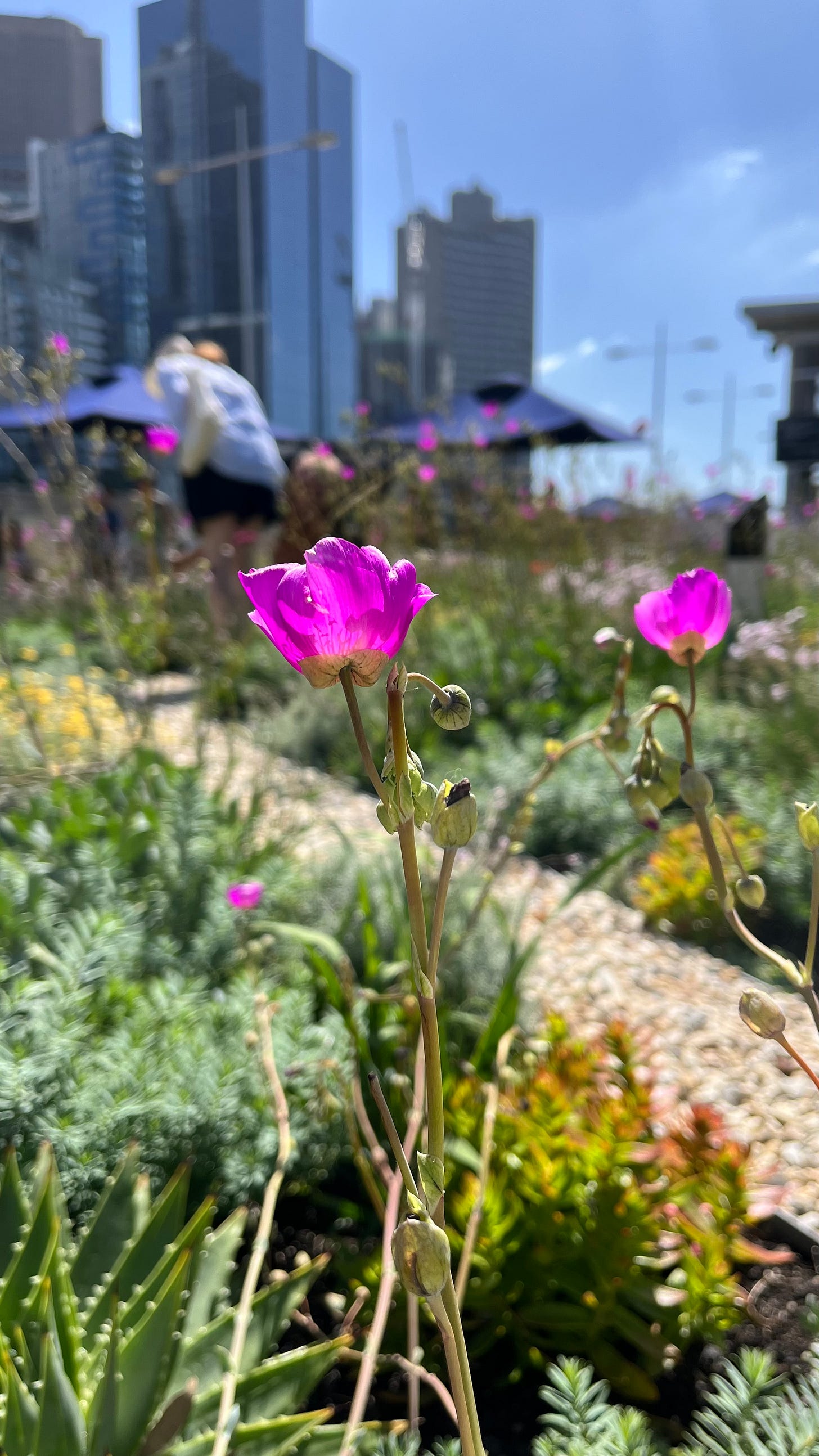
Advocating for more biodiversity
As I wander among the test plantings, I am struck by how unfamiliar many of the species are to me. Where are these plants in our nurseries and our garden centres?
A key challenge in developing a biodiverse urban garden is plant availability. Many of the species being tested are difficult to find in nurseries. Less than 10% of Australian plants available commercially are local species, and the team hopes this project will encourage greater demand.
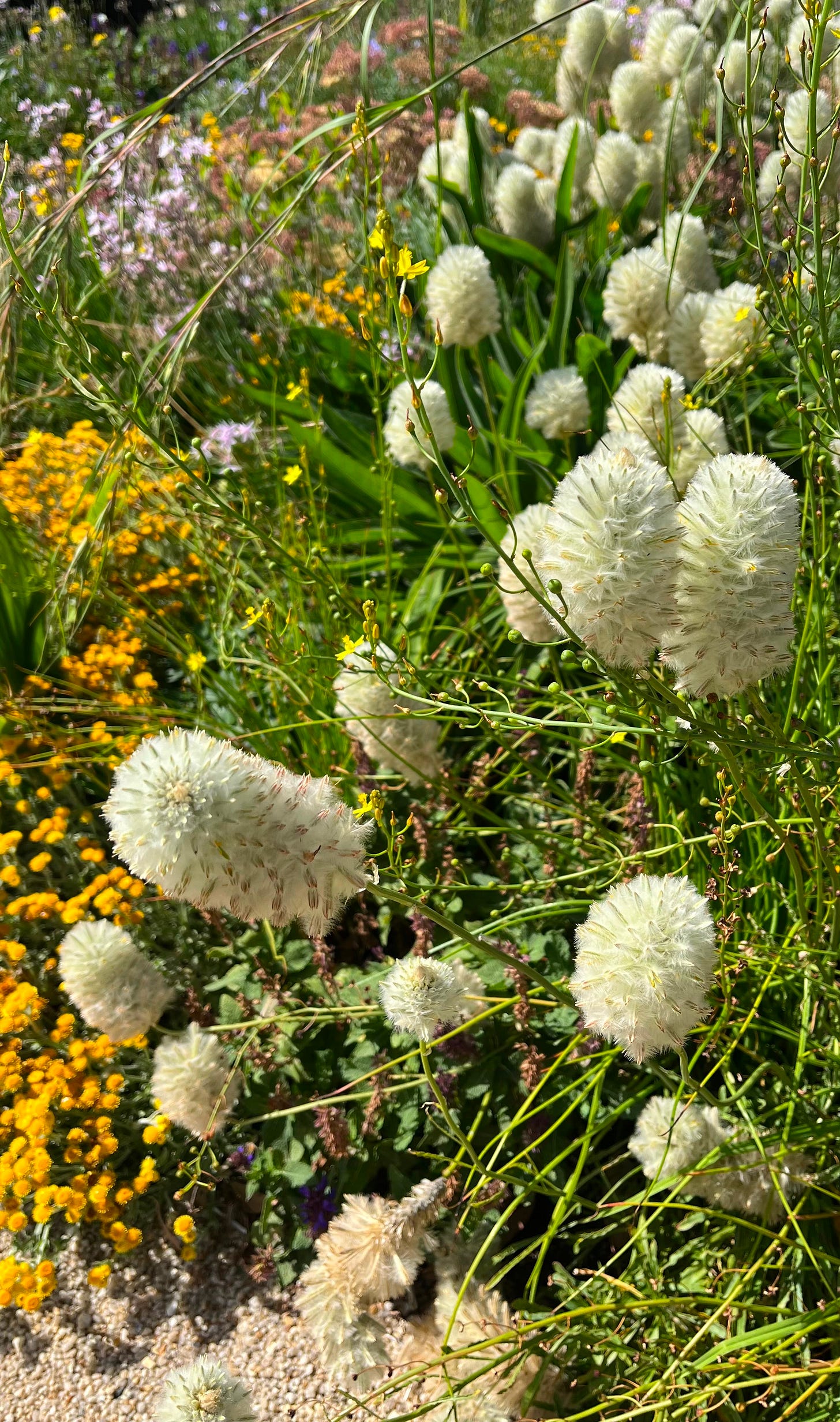
The team mentioned Cranbourne Botanic Gardens and an initiative called 'Raising Rarities'. It's a program that cultivates threatened Victorian plants to make them more accessible to the public. One such plant, Leucochrysum albicans, a Victorian species, is being trialled in the garden, along with the hard-to-find Ptilotus macrocephalus.
By pushing the boundaries of what's possible in urban planting, the Laak Boorndap team isn't just designing a garden. They're reshaping the conversation about how we can build beautiful, biodiverse and resilient public landscapes.
Seeds of change
Standing in the Test Garden, watching the blue-banded bees flit between flowers, I feel the weight of what’s unfolding here. This is not just a preview of what’s to come but part of a much bigger movement — one that challenges how we think about green spaces, how we care for our urban environments and how we connect to the land around us.
I think about what this garden might teach us about resilience, adaptation, and finding joy in change rather than fearing it. In a world where the news often feels overwhelming, places like this remind us that beauty can be deliberately cultivated and that we can create spaces of connection rather than division.
It has already changed the way I think about the succulents I inherited in my rental garden nine years ago. I have kept them but often moaned about their tackiness, pulling them out of beds and relegating them to pots. But now, instead of grouping them in large clusters of the same variety, I see from the Test Garden how they can be used effectively in the hotter, drier parts of a garden. It’s smart gardening — using what you already have and being intentional and creative about where it grows best. I had never considered that succulents could be integrated with other plants to create a resilient and beautiful space. Now I know!
I look forward to one day standing in the completed Laak Boondap. I can already imagine my family there with me, on the lookout for a blue-banded bee and expressing our delight when we see one, just as Susie did.
And maybe, in that moment, we’ll know that something truly special has taken root — not just plants in soil but new ways of thinking about our relationship with the living world around us.
Plant list for Test Garden
This list is available for everyone at the Test Garden for Laak Boorndap website. Current as of the date of posting - 10th March 2025.
Click on the name for a photo reference, where to buy, plus growing information.
Please note: These are not affiliate links, and I have no association with businesses listed in the links. All care has been given to provide accurate links.
Blue flame agave, Agave ‘Blue Flame’
Parry’s agave, Agave parryi
Millenium ornamental onion, Allium ‘Millenium’
Spider aloe, Aloe humilis
Spiral aloe, Aloe polyphylla
Jersey lily, Amaryllis belladonna
Little bluestem, Andropogon ‘Blaze’
Landscape Scarlet kangaroo paw, Anigozanthos ‘Landscape Scarlet’
Curlicue sage, Artemisia ‘Sea Foam’
Pale vanilla lily, Arthropodium milleflorum
Chocolate lily, Arthropodium strictum
Little Eric banksia, Banksia ericifolia ‘Little Eric’
Blue pincushion, Brunonia australis
Bulbine lily, Bulbine bulbosa
Cats tail, Bulbinella nutans
Milkmaids, Burchardia umbellate
Rock purslane, Cistanthe grandiflora
Common everlasting, Chrysocephalum apiculatum
Prickly currant-bush, Coprosma quadrifida
Dan’s Delight pig’s ear, Cotyledon orbiculata ‘Dan’s Delight’
Lady fingers, Cotyledon orbiculata ‘Oophylla’
Red flames, Crassula capitella ‘Campfire’
Sickle-leaf red crassula, Crassula perfoliate
Rock samphire, Crithmum maritimum
Ivy-leaved cyclamen, Cyclamen hederifolium
Scarborough lily, Cyrtanthus elatus
Tall dampiera, Dampiera altissima
Blue flax lily, Dianella caerulea ‘Cassa Blue’
Carthusian pink, Dianthus carthusianorum
Denim Blue twinspur, Diascia integerrima ‘Denim Blue’
Sea squill, Drimia maritima
Blue Metal echeveria, Echeveria ‘Blue Metal’
Pale purple coneflower, Echinacea pallida
Emu bush, Eremophila nivea
Foxtail lily, Eremurus sp.
Blue devil, Eryngium ovinum
Haze spurge, Euphorbia ‘Blue Haze’
Gophur spurge, Euphorbia rigida
Bloody cranesbill, Geranium sanguineum ‘Album’
Cottage gladioli, Gladiolus oppositiflorus subsp. salmoneus
Pink pokers, Grevillea petrophiloides
Matrona stonecrop, Hylotelephium ‘Matrona’
Gooseberry Fool, Hylotelephium maximum ‘Gooseberry Fool’
Roof iris, Iris tectorum
Algerian iris, Iris unguicularis
Turquoise ixia, Ixia viridiflora
Soldier boys, Lachenalia quadricolor
Rough blazing star, Liatris aspera
Blue stars, Lithotoma axillaris
Yellow spider lily, Lycoris aurea
Murnong, Microseris lanceolata
Bowden lily, Nerine bowdenii
Guernsey lily, Nerine forthergilli ‘Major’
Dassievygie, Oscularia deltoides
Small Jerusalem sage, Phlomis lanata ‘Pygmy’
Jerusalem sage, Phlomis sieheana ‘Silver Carpet’
Showy copper wire daisy, Podolepis jaceoides
Chorister primrose, Primula auricula ‘Chorister’
Greek horehound, Pseudodictamnus mediterraneus ‘Nana’
Featherheads, Ptilotus macrocephalus
Pink sunray, Rhodanthe manglesii
Blue Marvel sage, Salvia nemorosa ‘Blue Marvel’
Little Spires Russian sage, Salvia yangii ‘Little Spires’
Showy Everlasting, Schoenia filifolia subsp. subulifolia
Easter daisy, Symphyotrichum ‘Dove Blue’
Kangaroo grass, Themeda triandra
Blue lace flower, Trachymene coerulea
Wild parsnip, Trachymene composita
Ithuriel’s spear, Triteleia laxa
Fairy Star society garlic, Tulbaghia ‘Fairy Star’
Lady tulip, Tulipa clusiana
Cape lily, Veltheimia bracteate
Australian bluebell, Wahlenbergia stricta
Poor knights lily, Xeronema callistemon
Thank you for making it this far! Every like, comment, share or restack makes a huge difference in helping my work here at The Sentimental Gardener a success. I love hearing how you are inspired to think differently about plants and gardens, but also when something you have seen or read triggers a memory, connection or dream for you.


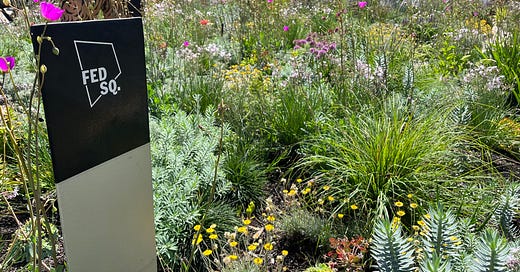



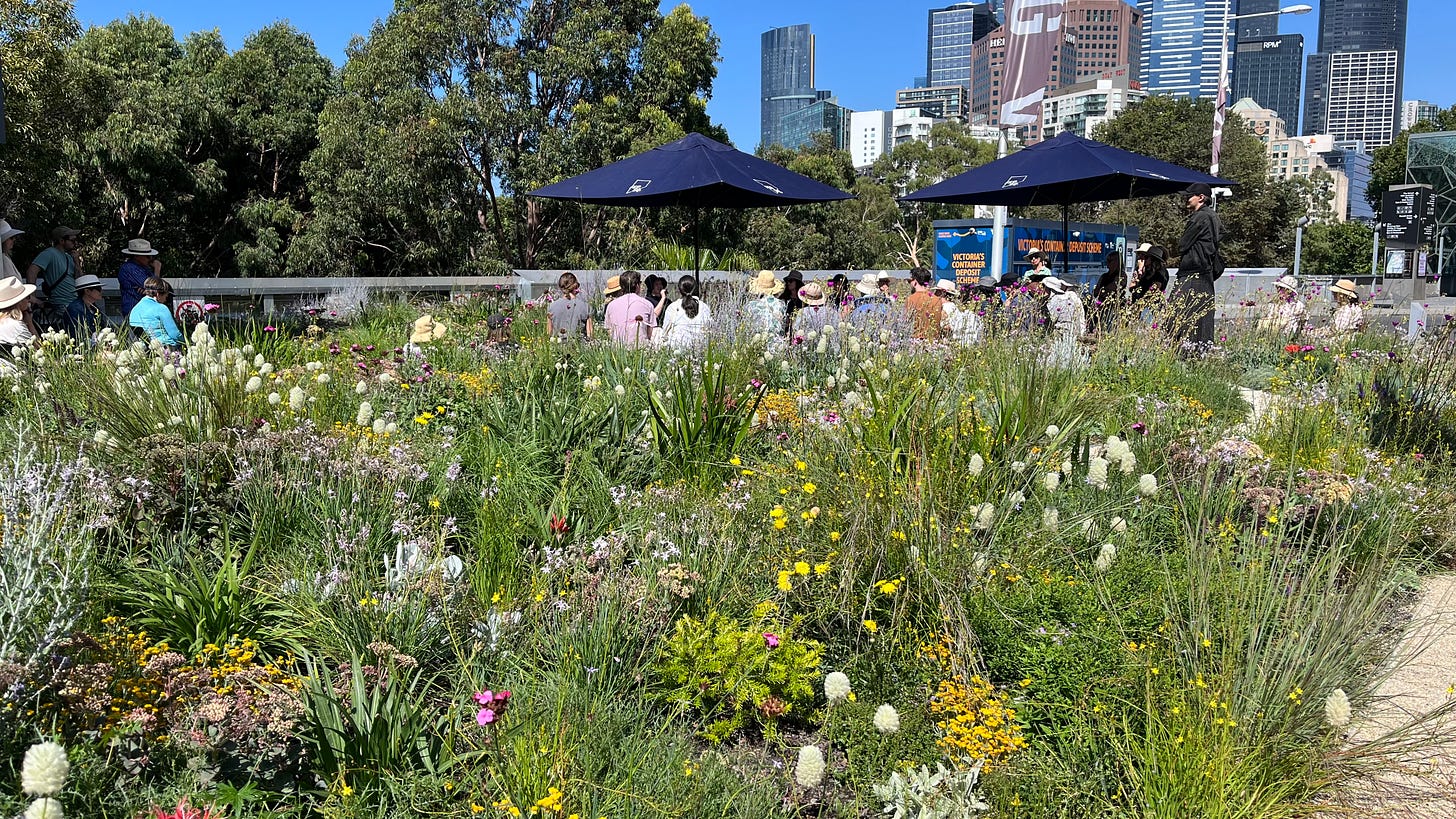

Such an exciting project. This was a great read and I love the idea of providing habitat and diversity in urban environments. Thank you for sharing.
What a fabulous project! This is a great read. Love that this concept is showcasing how beautiful diversity and sustainability can be in urban settings.